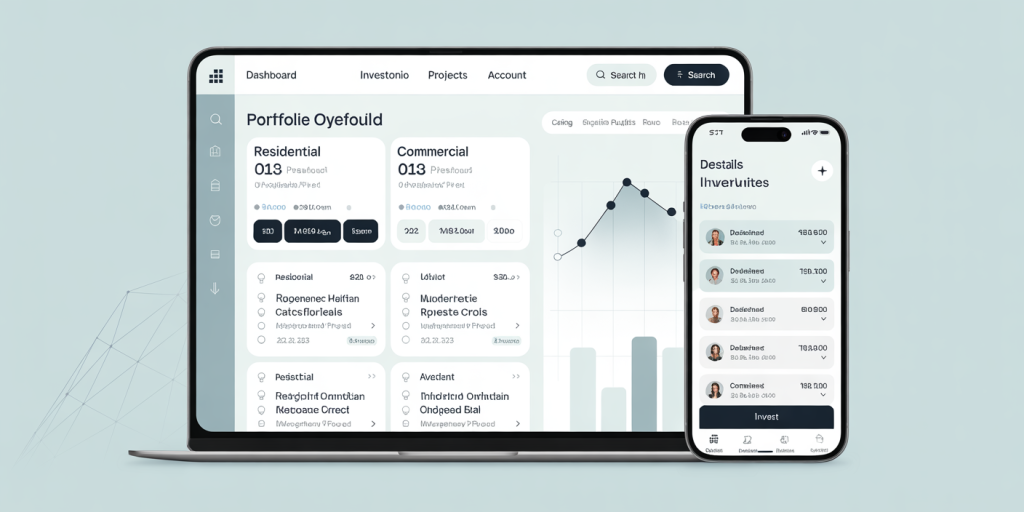How to Build Wealth with Real Estate Without Owning Property (REITs, Crowdfunding, etc.)
Anúncios
Real estate has long been recognized as a powerful vehicle for building wealth, offering both steady income and potential capital appreciation. Traditionally, owning physical property was the main route to tapping into this lucrative market. However, this often requires significant capital, involves management hassles, and carries liquidity risks. Fortunately, the evolution of financial markets and technology has created alternative avenues to invest in real estate without the need to physically own property. Investment vehicles such as Real Estate Investment Trusts (REITs) and real estate crowdfunding platforms have democratized access, allowing investors to participate in property markets with far less capital and complexity.
In this article, we explore practical strategies to build wealth through real estate without direct ownership. We will uncover how REITs and crowdfunding work, assess their advantages and risks, and take a close look at examples and statistics evidencing their effectiveness. Whether you are a novice investor or seeking diversification, understanding these tools can bolster your long-term financial growth.
Diversifying Real Estate Investment Through REITs
Anúncios
REITs are companies that own or finance income-producing real estate across different sectors including commercial, residential, healthcare, and industrial properties. Listed on major stock exchanges, REITs function much like mutual funds but focus on property assets. Investors can buy shares in a REIT, gaining the benefits of real estate ownership without the burdens of property management.

A key advantage of REITs lies in their liquidity and accessibility. Since REITs trade like stocks, investors can easily buy or sell shares at market prices, unlike traditional real estate which can take months to liquidate. Additionally, REITs pay out at least 90% of taxable income as dividends, often yielding higher than typical equities. For instance, the FTSE Nareit All Equity REITs Index has historically offered an average dividend yield around 3.5% to 4.5%, with a total return outperforming the broader S&P 500 in many periods.
Anúncios
Consider the example of Simon Property Group (SPG), one of the largest retail REITs in the United States. Despite the challenges faced by physical retail spaces during recent economic downturns, SPG has maintained dividend payouts consistently above 5% for several years. Investors who purchased SPG shares gained both dividend income and capital appreciation from portfolio diversification into high-quality mall assets.
REITs also provide exposure to specialized real estate niches that would be difficult or costly for individual investors to enter alone, such as data centers, cell towers, or healthcare facilities. Trusts like Digital Realty (DLR) or American Tower (AMT) have tapped into the booming technology infrastructure market, delivering impressive returns driven by long-term leases and strong tenant demand.
Leveraging Crowdfunding Platforms for Real Estate Access
Crowdfunding has transformed the landscape of real estate investment by aggregating capital from multiple investors to finance projects. Through online platforms, investors can browse available deals, perform due diligence, and invest with relatively low minimum amounts—often in the $500 to $5,000 range. This model provides direct equity or debt stakes in specific real estate projects without the traditional barriers to entry.

One notable platform is Fundrise, which allows investors to participate in diversified portfolios of residential and commercial properties nationwide. Fundrise reported an average annualized return of around 8-12% in the past decade for their eREIT products, combining rental income distributions with property value appreciation. Such returns are competitive with private real estate funds but with far lower capital commitments and greater transparency.
Another example is RealtyMogul, which enables investments in single-family rental portfolios, office buildings, and multifamily complexes. Their diversified approach helps mitigate project-specific risks, while distribution schedules vary depending on the deal structure.
Crowdfunding also offers flexibility in risk tolerance and liquidity preferences. Investors can choose between: Equity investments with higher return potential but longer holding periods Debt investments providing fixed interest payments with lower risk
A critical consideration is the regulatory environment. Most crowdfunding offerings are limited to Accredited Investors (as defined by the SEC) due to the complexity and risk involved. However, some platforms now offer public non-accredited investment options under Regulation A+.
Comparing REITs and Crowdfunding: Key Differences and Investment Suitability
Investors looking to build wealth through real estate without direct ownership often ask which method best suits their goals. The following table highlights some critical characteristics to help assess REITs and crowdfunding options:
| Feature | REITs | Real Estate Crowdfunding |
|---|---|---|
| Liquidity | High (traded on stock exchanges) | Low to moderate (typically 3-5 years holding periods) |
| Minimum Investment | Low to moderate (as low as $100) | Moderate ($500 to $5,000 typical) |
| Income Type | Dividends (regular, stable) | Dividends or interest payments, sometimes irregular |
| Management Control | None by individual investors | Minimal, but can sometimes select deals |
| Risk | Market and sector risk dependent | Project-specific and platform risk |
| Transparency | High (SEC filings, public reports) | Moderate (platform disclosures vary) |
| Accessibility | Very broad (public markets) | Limited, often to Accredited Investors |
While REITs provide greater liquidity and transparency, crowdfunding delivers more control and the possibility of higher returns from individual deals. Investors with shorter time horizons and desire for immediate tradability often prefer REITs. Conversely, those seeking closer ties to property assets and willing to accept longer lock-up periods might opt for crowdfunding.
Practical Steps to Build Wealth Using Non-Ownership Real Estate
Starting your journey in real estate investment without ownership involves several important steps to maximize returns and minimize risks.
First, consider your investment goals and risk tolerance. If you are cautious and require liquidity, focus on investing in publicly traded REITs through brokerage accounts or tax-advantaged accounts such as IRAs. Research sectors aligned with your outlook, such as industrial/logistics REITs during e-commerce booms or residential REITs benefiting from housing demand.
Second, if you prefer more direct exposure and are comfortable with longer commitments, join reputable crowdfunding platforms. Thoroughly evaluate their track records, fees, and project due diligence processes. Diversify across multiple deals or platforms to mitigate idiosyncratic risks.
Regularly monitor your investments to stay aware of market trends and company fundamentals. For example, during the COVID-19 pandemic, certain retail REITs declined sharply, while industrial and data center REITs surged, highlighting the importance of sector allocation.
Tax considerations also play a role. REIT dividends are typically taxed as ordinary income but can qualify for pass-through deductions under Section 199A in the U.S., helping reduce tax burdens. Crowdfunding returns vary based on equity or debt structures and associated tax treatments.
Real-Life Success Stories and Data-Driven Insights
Data supports the growing appeal of these alternative real estate investments. According to Nareit, equity REITs generated an average annual total return of approximately 9.5% over the past 20 years, slightly outperforming the S&P 500’s 8.5%. Moreover, REITs historically maintained lower volatility on a risk-adjusted basis, making them suitable for diversification.
Crowdfunding, though younger as an asset class, boasts compelling case studies. For instance, DiversyFund, a well-known platform, reported that investors in its Growth REIT product earned an internal rate of return (IRR) between 10% and 12% annually after fees and expenses since inception. Similarly, PeerStreet, specializing in real estate debt crowdfunding, has demonstrated average yield returns near 7-9%, backed by short term loan investments.
Consider Jessica Miller, a millennial investor who started with $2,000 in REITs and later diversified into crowdfunding deals. Over five years, her portfolio doubled, primarily driven by monthly dividend reinvestments and project appreciation. Her success illustrates how even modest capital, when invested strategically, can cultivate notable wealth.
The Future Outlook of Non-Ownership Real Estate Investment
Looking ahead, technological advances and regulatory evolutions are poised to further enhance access and efficiency in real estate investing without direct ownership. Blockchain and tokenization promise to fractionalize property assets beyond current crowd limits, increasing liquidity and expanding investor bases globally.

Moreover, as ESG (Environmental, Social, Governance) concerns grow, more REITs and crowdfunding platforms integrate sustainability criteria in project selection, attracting socially conscious investors and potentially improving long-term asset performance.
Crowdfunding platforms are also expected to broaden offerings to retail investors through regulatory relaxations, thereby opening high-quality real estate deals beyond Accredited Investors. Combined with AI-driven analytics and enhanced due diligence tools, the investment process will become more transparent and data-informed.
Lastly, macroeconomic trends such as urbanization and shifts in workplace environments will create new real estate demand niches for investors to capitalize on, from co-living spaces to logistics hubs underpinning e-commerce.
Building wealth with real estate no longer demands ownership of physical properties or handling tenants and maintenance. Through vehicles like REITs and crowdfunding, investors can participate in lucrative real estate markets with greater flexibility, lower entry costs, and improved liquidity. By understanding both options, aligning them with personal goals, and remaining vigilant to market changes, individuals can harness real estate’s wealth-building power effectively in the digital age.



Post Comment